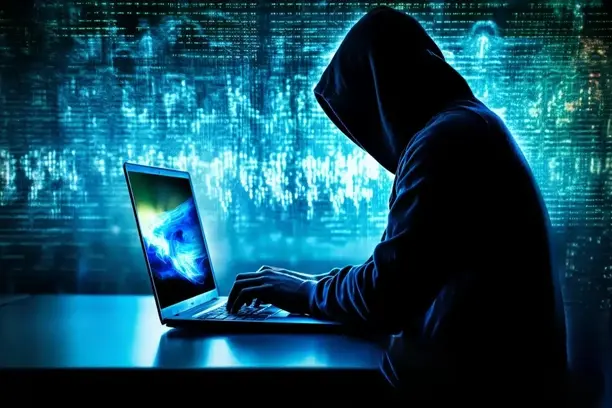The relationship between NFT (non-homogenized tokens) and the metaverse is getting closer and closer, and has become an important topic in the cryptocurrency field.NFT, as a carrier of digital assets, plays a key role in the metaverse, which gives uniqueness and scarcity to items, land, artworks, etc. in the virtual world. In this paper, we will deeply analyze the interaction between NFT and the meta-universe, and discuss how they complement each other and jointly promote the development of the virtual economy.

Basic Concepts of NFT and the Metaverse
To understand the connection between NFT and the metaverse, one first needs to understand the basic meaning of both concepts.
NFT: Non-Fungible Token (NFT) is a digital asset created on the blockchain. Unlike cryptocurrencies such as Bitcoin or Ether, NFTs are unique and non-interchangeable. Each NFT has a unique identifier that gives it unique value and scarcity.NFTs are commonly used in areas such as digital art, gaming items, and virtual land.
Metaverse: Metaverse is a virtual world built by virtual reality (VR), augmented reality (AR), blockchain and other technologies. In this world, users can interact, create, and trade through virtual characters. Metaverse is not just a game, it is also a virtual ecosystem integrating socialization, entertainment, work and learning.
NFT's core interaction with the metaverse
The NFT interacts with the metaverse in the following ways:
1. Uniqueness and ownership of digital assets
In the metaverse, users can own virtual land, artwork, clothing, items, etc., and the uniqueness and ownership of these assets can be demonstrated through NFTs. For example, the ownership of a piece of virtual land can be proven through an NFT, ensuring that each piece of land is unique and cannot be replicated.
- Virtual land: e.g. land in Decentraland and The Sandbox, bought and sold through NFT.
- Digital art: artists can cast their work as NFT and sell it on the Metaverse platform.
- Virtual Goods: In the game, players can buy, sell and trade equipment or character skins through NFT.
With NFT, assets in the metaverse are not only circulated, but also ensure the legal rights of their owners. This gives the user's assets in the virtual world a value similar to that of the real world.
2. Incentives and the virtual economy
The application of NFTs in the metaverse is not only limited to the trading of virtual goods, but also provides users with the opportunity to participate in the virtual economy. Users can create and trade NFTs to gain revenue, and also receive special treatment or rights from the platform by holding certain NFTs.
- Creative Incentive: artists and developers get paid for creating unique NFT works.
- Transaction incentives: Transaction fees incurred during the buying and selling of NFTs can generate revenue for both the platform and the user.
- Holding Incentive: Certain meta-universe platforms will provide NFT holders with exclusive rights and benefits, such as VIP treatment and access to special events.
These incentives drive the economic cycle of the metaverse, where users are not only participants, but also creators and beneficiaries of economic activity.
3. Socialization and entertainment in the metaverse
In the metaverse, NFT also plays an important social and entertainment role. Through NFT, users can show their personal characteristics and participate in various virtual activities. For example, users can dress up their virtual characters by purchasing virtual clothing NFTs, or participate in online concerts and digital art exhibitions by purchasing music NFTs.
These activities not only enrich users' entertainment experience, but also bring more user stickiness and activity to the platform.
NFT drives the future of the metaverse
As NFT technology continues to advance, the potential of the metaverse will be further unlocked. Below are a few of the major ways NFT will contribute to the future development of the metaverse:
1. Enhancing asset liquidity
NFT makes the trading of virtual assets more convenient and transparent. Through blockchain technology, users can easily trade assets globally without geographical restrictions.The continuous expansion of the NFT platform and marketplace has led to a significant increase in the liquidity of virtual goods.
2. Enhancing virtual world immersion
With the development of VR and AR technologies, the meta-universe will become more realistic.NFT not only provides unique virtual items, but also enhances the user's sense of immersion. For example, users can own virtual exhibits, game characters, etc. and display them in their virtual space through NFT, thus enhancing the overall experience.
3. Stimulating innovation and cross-border cooperation
NFT provides a platform for cross-border cooperation between industries. For example, brands can put limited edition goods on sale through NFT, and artists and game developers can combine NFT with blockchain games to create unique virtual worlds. As the application scenarios of NFT continue to expand, the ecology of the metaverse will become more colorful.

Summary: NFT and the Metaverse Evolve Together
The connection between NFT and the metaverse is complementary; NFT provides uniqueness and transaction value for virtual assets in the metaverse, while the metaverse provides a wide range of application scenarios and markets for NFT. As both technologies mature, we will see more innovations and opportunities in a richer and more interactive virtual world in the future.
The combination of NFT and Metaverse brings a new era of digital assets and promotes the development of the virtual economy. In this process, users, creators and platforms will jointly enjoy the dividends brought by this emerging industry and walk at the forefront of technology and business.







